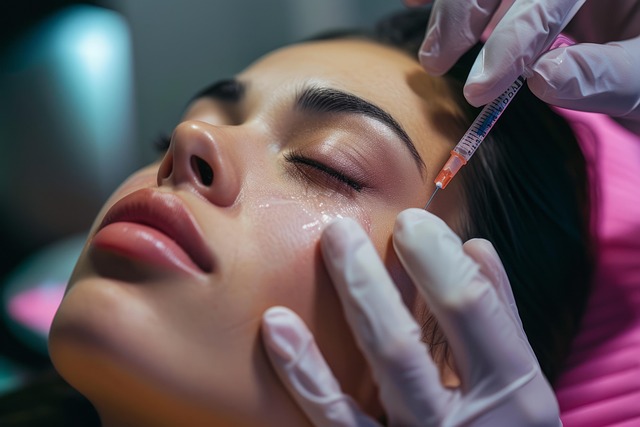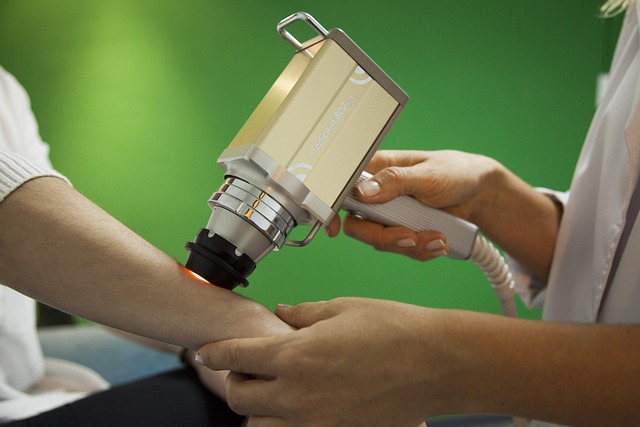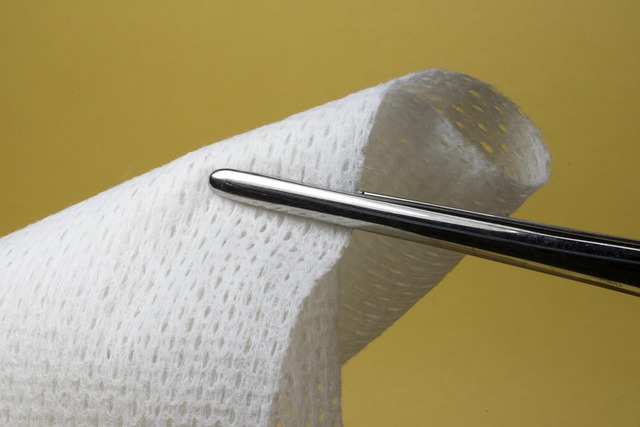Botox treatments, involving injections of botulinum toxin, have become popular for minimizing fine lines and wrinkles through muscle paralysis. This non-surgical procedure offers both aesthetic benefits for facial contouring and medical advantages in treating conditions like hyperhidrosis and eye muscle disorders. With a range of specialized treatments available, professionals can tailor solutions to individual needs. Safety and effectiveness rely on choosing a reputable clinic and expert with thorough consultations and detailed injection techniques. Regular touch-ups are essential for maintaining results over time.
“Unveil your skin’s youthful radiance with professional cosmetic Botox treatments. This comprehensive guide delves into the science, types, and benefits of this popular non-invasive facial rejuvenation procedure. From understanding the muscle-relaxing effects of Botox to choosing the right clinic, you’ll explore essential aspects before, during, and after injections. Learn about various treatment options, potential risks, maintenance, and long-term results, empowering you to make informed decisions for your skincare journey.”
Understanding Botox: The Science Behind the Treatment

Botox treatments have become a popular choice for individuals seeking to reduce the appearance of fine lines and wrinkles, as well as enhance facial contouring. But what exactly is Botox? At its core, Botox is a neurotoxin produced by the bacteria Clostridium botulinum. When administered by a trained professional in controlled doses, it works by temporarily blocking specific nerve signals that cause muscle contractions, which over time lead to dynamic wrinkles forming on our faces due to constant movement.
The science behind Botox treatments is precise and calculated. It involves injecting tiny amounts of the toxin into targeted areas of the face. This disrupts the communication between nerves and muscles, resulting in a smoothing effect on the skin’s surface. The procedure offers both aesthetic benefits and medical applications, as it can also be used to treat conditions like excessive sweating (hyperhidrosis) and eye muscle disorders.
Types of Botox Treatments Available for Professionals

In the realm of professional cosmetic Botox, a myriad of treatment options cater to diverse needs and goals. Beyond the classic facial wrinkle reduction, advanced techniques now offer targeted injections for specific areas like the neck (neck botox) or hands (hand botox). These specialized treatments aim to smoothen, contour, and rejuvenate, providing individuals with more tailored and effective results.
The range of Botox treatments extends further still, with innovative procedures such as botulinum toxin for medical purposes, including chronic migraine relief and excessive sweating management. Moreover, newer formulations like dynamic Botox injections allow for natural expression while achieving desirable cosmetic outcomes. Such advancements ensure that professionals have a comprehensive array of tools to offer their clients, enhancing their ability to cater to varying preferences and achieve exceptional aesthetic improvements.
Benefits and Potential Risks: What to Expect During and After Procedures

Botox treatments offer a range of benefits, particularly in reducing the appearance of fine lines and wrinkles associated with ageing. This non-surgical procedure involves injecting a small amount of Botox into specific muscle groups to temporarily paralyse them, thereby smoothing out skin imperfections. One of the key advantages is its ability to provide a more youthful complexion without significant downtime or recovery periods. Patients often experience minimal discomfort during the treatment, making it an attractive option for those seeking subtle enhancements.
However, like any medical procedure, Botox treatments are not without potential risks. Temporary side effects may include mild bruising, swelling, or headaches at the injection site. In rare cases, patients might experience more severe reactions, such as difficulty swallowing or breathing, which require immediate medical attention. It’s crucial to discuss these possibilities with a qualified professional before proceeding with any Botox procedure. After the treatment, results typically become visible within 2-4 days, and they can last anywhere from 3 to 6 months, depending on individual factors.
Choosing the Right Clinic and Professional for Your Botox Injection

When considering Botox treatments, selecting the ideal clinic and professional is paramount for achieving optimal results and ensuring safety. Look for a reputable clinic with qualified, board-certified dermatologists or plastic surgeons who specialize in injectables. Check their credentials, experience, and patient testimonials to gauge their expertise.
A top-tier professional will provide a comprehensive consultation, assess your facial structure, skin health, and specific concerns. They should offer personalized treatment plans, discuss potential side effects, and answer all your questions thoroughly. This tailored approach ensures that your Botox injections are administered correctly, enhancing your natural features while minimizing risks associated with the procedure.
Non-Invasive Facial Rejuvenation: The Art of Botox Administration

Botox treatments have revolutionized non-invasive facial rejuvenation, offering a subtle yet effective way to combat signs of aging. The art of Botox administration lies in its precise application, targeting specific muscle groups responsible for facial lines and wrinkles. Skilled professionals use fine needles to inject minute amounts of botulinum toxin, temporarily paralyzing muscles and preventing contraction-induced wrinkles from forming or deepening.
This meticulous process ensures natural-looking results, where the skin appears smoother and more youthful without appearing overdone. Botox treatments provide a non-surgical alternative for folks seeking subtle enhancements, fostering confidence and enhancing overall appearance.
Maintenance, Touch-Ups, and Long-Term Results: A Comprehensive Guide

Botox treatments are not one-time events; they require maintenance and touch-ups to sustain their effects and achieve long-term results. The frequency of these top-ups varies from person to person, depending on several factors including age, lifestyle, and muscle activity. Generally, Botox can last between 3 to 6 months before noticeable changes start to fade. Regular maintenance sessions help to maintain the desired aesthetic, preventing deep wrinkles from redeveloping.
Touch-up treatments are crucial in this process, ensuring that areas previously treated remain smooth and relaxed. They allow for precise adjustments, addressing any new lines or creases that might have formed since the last session. By staying proactive with touch-ups, individuals can expect more consistent results over time, enhancing their overall appearance and boosting confidence.
